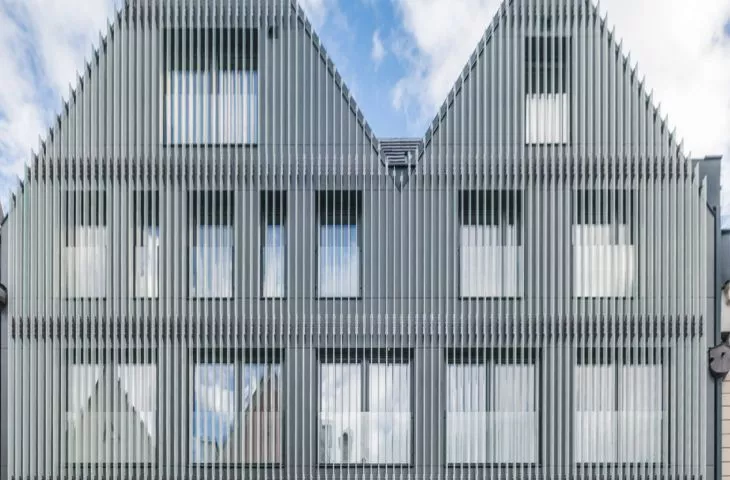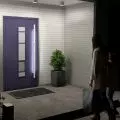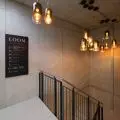On the picturesque Odrzańska Street in the heart of Wroclaw, a new, contemporary coat has been put on one of the townhouses. Marek Skorupski and Michal Zgorzynski, architects from the ARCH-Eand greenGO studios, rebuilt the existing 1970s office and servicebuilding, changing not only its appearance, but also its function.
The plot of land at 11 and 12 Odrzanska St. was historically occupied by two buildings - a narrower one at number 11 and a wider one at number 12. The tenements, which were still in use after the war, partially collapsed around 1965, and in the 1970s a basic design for an office andservice building was developed for the plot in question.
Built in the 1970s, the building at 11-12 Odrzanska Street stood out from the surrounding historic buildings in terms of structure, detail and composition. The building was characterized by a pulpit roof ending in a horizontal cornice, located much lower in relation to the neighboring gabled buildings. Analogous gable elevations were also present before the war in the tenements originally existing on the plot at 11-12 Odrzanska Street.
bird's eye view
photo: Maciej Lulko
The most important task facing the authors of the project for the reconstruction of the existing fabric was to visually reunite the building with its surroundings, to restore in the elevation the historical division into two tenement houses - 11 and 12, and to use the qualities of the original structure. According to the architects, important in the project - in accordance with the principles of the Venice Charter - was to achieve the effect of a completely contemporary facade, clearly distinguishable from the original historic facades of the frontage tenements.
The architects decided to restore the historic division into two buildings in the façade, thanks to which, as they emphasize, the building's front, which was wide before the reconstruction, has been reinscribed in the scale of the neighboring historic buildings.
elevation
photo: Maciej Lulko
The shape of the windows was also changed - the 1970s building had wide, horizontal windows, the form of which differed from those found in the historic frontage buildings. In order to restore the correct proportions of the window openings, the architects decided to raise them (lowering the level of the sill) and reduce their width.
elevation
Photo: Maciej Lulko
The culmination of the reconstruction, in addition to restoring the historic division of the facade and changing the shape of the windows, is the use of a thoroughly modern double facade with a layer of glass "razor blades" covering the basic facade. The translucent vertical panels were made of tempered glass with printed horizontal stripes, so that, as the project's authors point out, from the perspective of the interior of the apartments they become almost completely transparent, without blocking the view from the window along the street. From the outside, on the other hand, depending on the angle of view, their transparency changes from zero to almost full. As the architects assure, this "second skin" of the building does not interfere with its internal residential function - the glass blades do not obscure the view of the residents.
elevation detail
Photo: Maciej Lulko
Redevelopment of existing architectural structures is sometimes controversial, and it is futile to look for the golden mean. After all, what is better - a return to the historical shape (and if so, to what period should one go back), leaving the object as it is, or a modern reconstruction that only symbolically refers to the original or a completely contemporary interpretation? In our opinion, the most important things in all this are sincerity of form, respect for the space and the use of appropriate, contemporary language.






























































